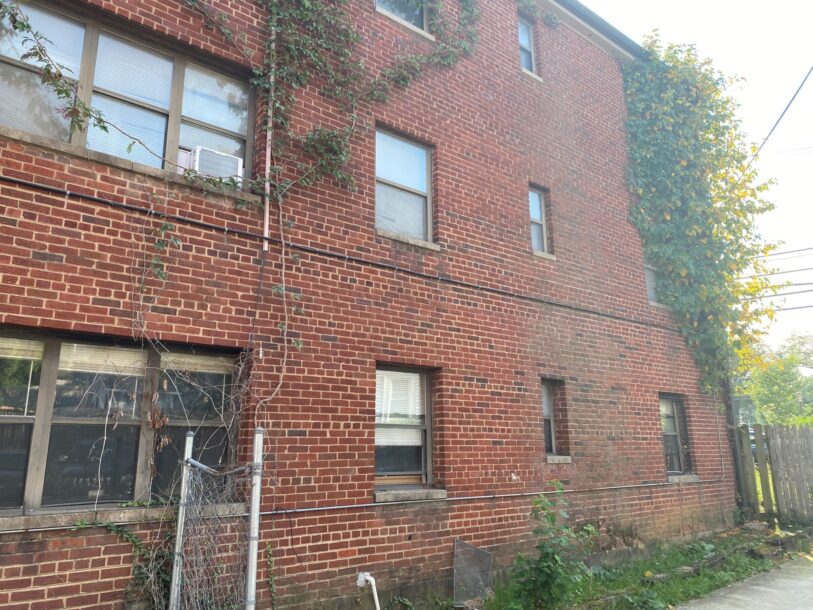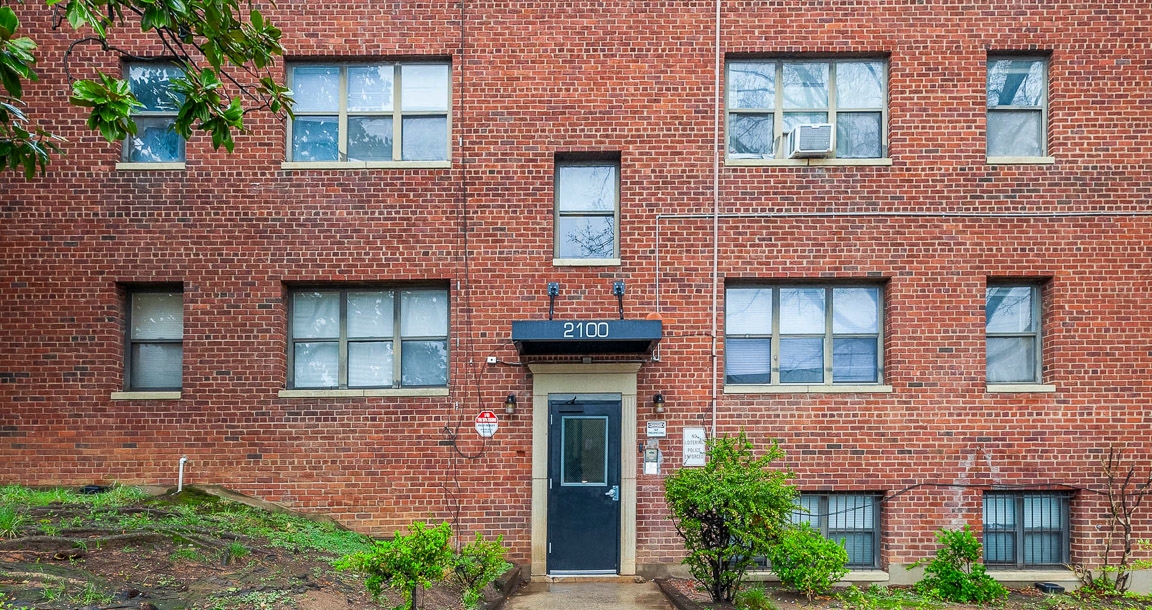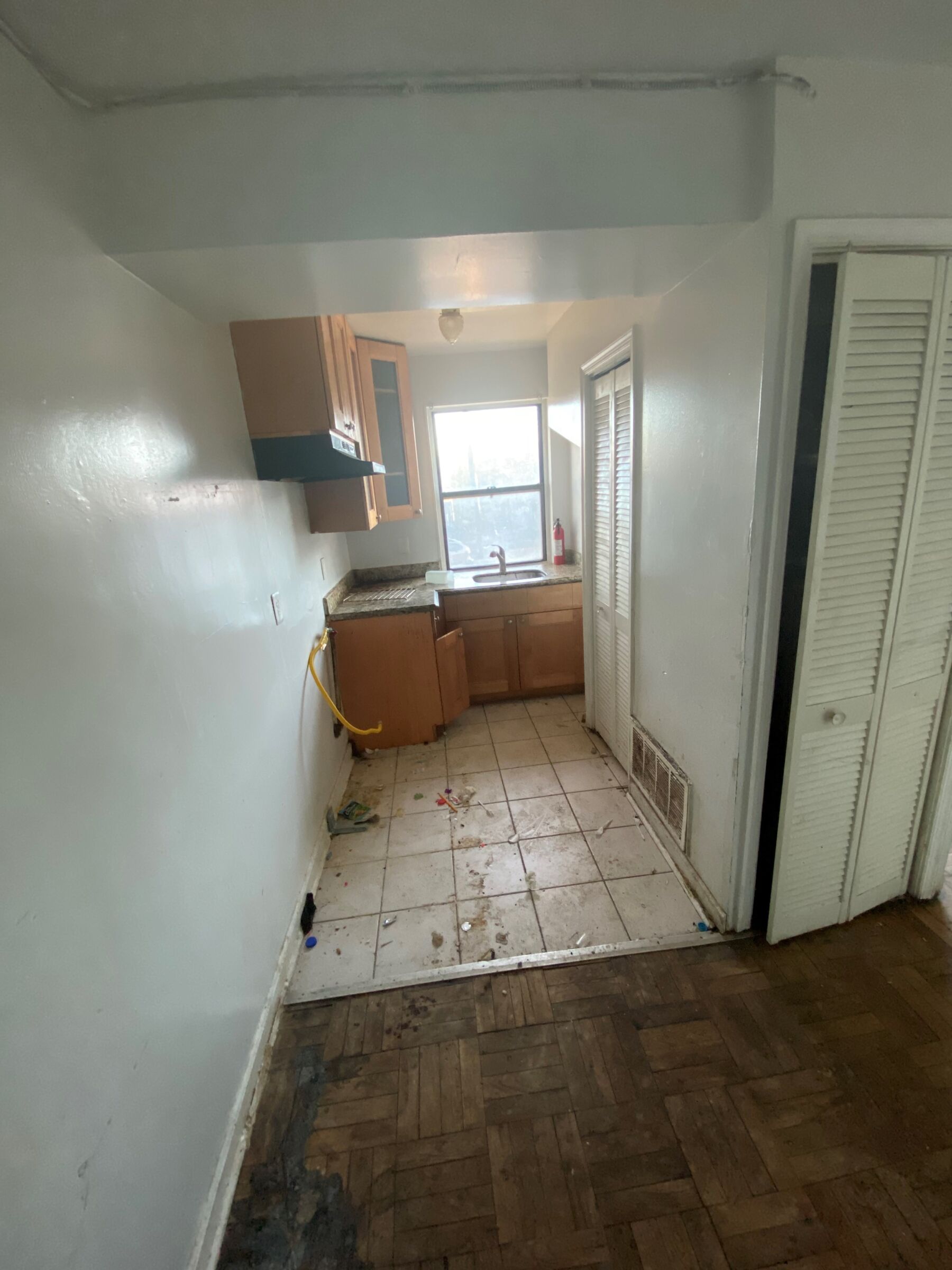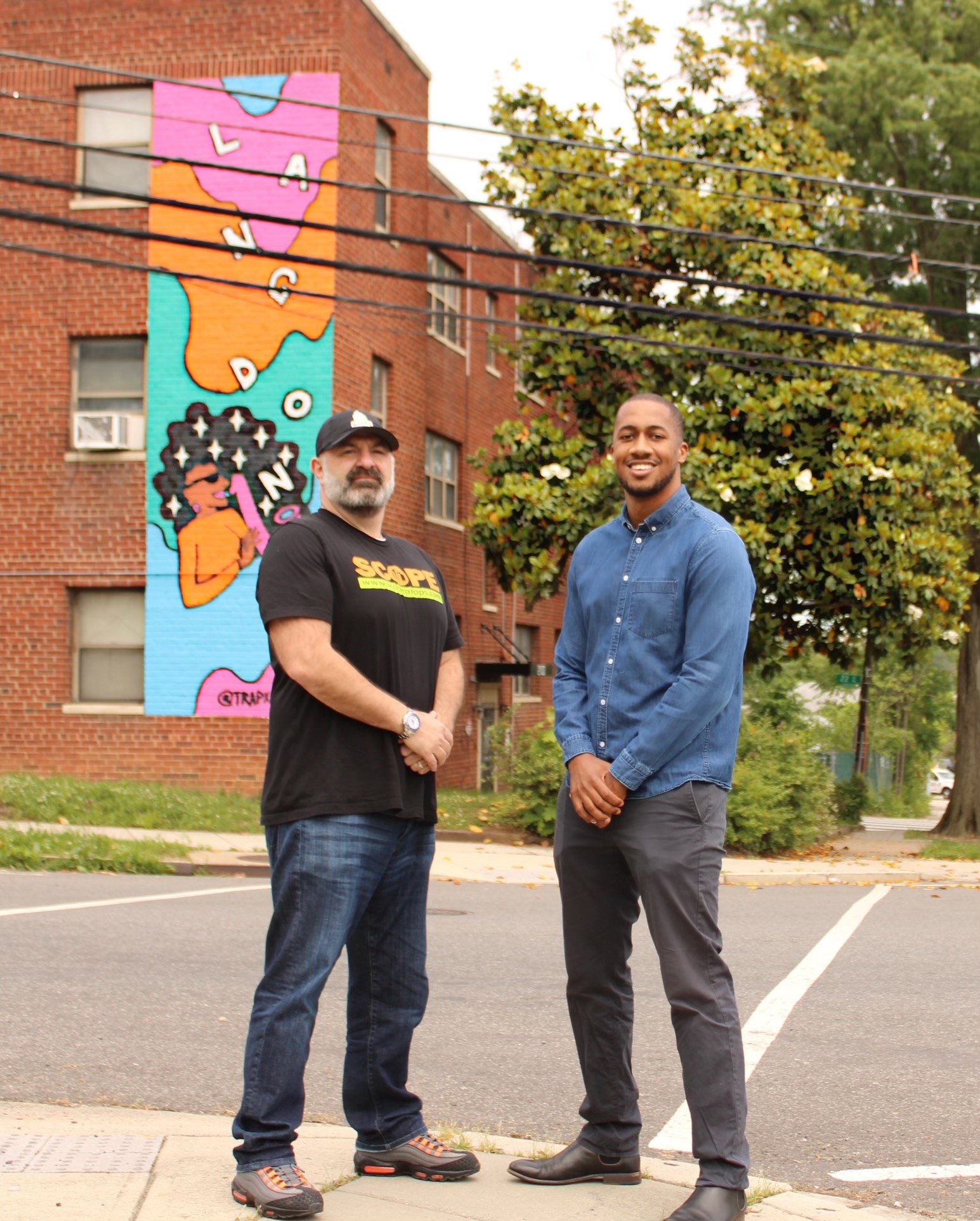In DC’s Langdon Neighborhood, a Blighted Apartment Complex Gets a Fresh Start
View more stories from our 2021 Annual Report
Chris Grant launched Yoke Management Partners with a purpose—to diversify real estate investment companies and use commercial development as a catalyst to accelerate impact.
Grant is a Black, Baltimore native and behind Yoke is a mission to identify and preserve affordable housing in the Mid-Atlantic region. At the end of 2021, Grant took on his largest project to date—renovating a 13-unit apartment complex in the Langdon neighborhood of Northeast, D.C. that had been poorly maintained and was riddled with open housing code violations.
He may have only recently launched his business, but the 30-year-old says the idea has been in the making for years. Grant attended undergrad at the University of Maryland and went on to graduate from Stanford’s Business school. His first job out of Stanford further incentivized his dream to launch his own business back home, in the communities that mattered most to him. Working at a private investment firm as an investment manager, he noticed that there was a gap in the type of projects his investors were allocating funds to and a lack of consideration for the impact the projects would have in communities.
Eventually, Grant decided that he would lean into the idea of impact investing by starting his own entrepreneurial endeavor—and Yoke was born. Now, he is targeting multifamily projects in the Mid-Atlantic region to preserve affordable housing and build relationships within the local communities—all while helping build access to capital.
Addressing Affordable Housing Means Understanding Communities
Grant recognized that understanding the communities where he works is not only essential to creating successful investments, but critical to creating long-lasting impact. Langdon apartments is in a neighborhood that Grant is personally familiar with, having spent a few years in the area. He noticed neighborhood pockets that still held a “local flavor” were being increasingly threatened by gentrification and displacement of residents in D.C.’s historically Black neighborhoods.
Langdon is considered a historically Black neighborhood, with 77% of residents identifying as African American. Grant paints a picture of the Langdon neighborhood as a beautiful, small neighborhood with historic bungalow houses, hilly roads, and an overall boasting of this local flavor. He stumbled on the apartment building, and despite its neglected and overlooked appearance, he saw a compelling opportunity to make it into a beautiful fixture for the neighborhood to be proud of. As a first move, he decided not to “rebrand” the building by stripping it of its history—but naming it “Langdon” to pay homage and to maintain the heritage and legacy of the neighborhood.
“When you have a good space to live, to be in, and a good community around you, it helps you to get to the next level.”
—Chris Grant
When asked what would have happened to the property had he not stepped in, the entrepreneur points to the surrounding neighborhoods of Langdon, where longstanding residents have fallen victim to the adverse effects of growth and development projects in an ever-growing D.C. Rental home shortages and market-rate rent, rising housing costs, and unaffordable housing development projects have collectively resulted in the city’s low-income residents being squeezed out of their homes or pushed to take on high cost burdens. For Grant, he’s ensuring this doesn’t happen to his own tenants, by leasing 100% of units to tenants at or below 80% of D.C. AMI and committing to not increasing rent by more than 3% annually.
It is apparent that affordable housing isn’t just a business venture for Chris Grant—it’s his motivation. When asked about how affordable housing became so important to him, Chris says, “For me, I learned early on that there is this idea of the “Maslow Hierarchy of Needs” and at the bottom of these needs, you really need to have the basics… which includes a home where you can feel safe and secure. In many cases, when I think back to some of the people I met where I am from, a lot of the people who didn’t have the opportunity to be where I am today to feel safe and secure…And because of that, they couldn’t really get to that point of self-actualization– dreaming big, and really using all the gifts and talents that they have [to achieve their potential] for themselves and their families.”
Impact through Art
When the idea of a mural came to Grant, he knew he wanted to lean on the rich history of Gogo music in D.C, and in Langdon, where a park named after the famous musician Chuck Brown is located. He found a local artist to create something vibrant on the corner lot. He chose the artist TrapBob for the socially conscience, yet humoristic, way that her art sheds light on communities’ struggles, without discounting their strengths. With the mural, Grant hopes to create a mirror into the aspects of the neighborhood that he wants the rest of us to see—this is a community that likes gathering, music, fun and overall, exuberates a bold and colorful energy. For Grant, the artwork is a great way to help energize and inspire some of those activities in the neighborhood.
A Vision Comes Together
At Langdon Apartments, the new landlord is already hearing promising feedback from tenants. From the updated hallways and new fixtures to the new security keys fobs to enter the building, the response is overwhelmingly positive. He’s even seen some changes in how the residents take ownership of the property. On one of his recent visits, he noticed one of the older residents picking up trash around the building.
Grant attributes a lot of his own success to the foundation a good home and community provided him. He spent a lot of time thinking about this project, before even seeing the building or launching his business. He knew he wanted to make a model that was scalable. His 3-pronged strategy,
“Find something that you can refresh and update in a way that people can find pride in, rebranding in a way that always pays homage to whatever the local community is, and revitalization—managing in a way that preserves the essence in affordability over as long as possible.”
On how he feels about the progress of his current project, Langdon Apartments, Grant expounds “I feel great, really excited. To me it is a great validator that you can focus a business on impact-oriented housing, and [still] have success, and you can also try to maintain affordable rents while making it look nice, and the last piece is it’s motivating me to want to do more and ask, how can I do more? And I hope that I can make that a reality.”
Aligning with Like-Minded Partners
Another aspect of Grant’s vision is “alignment”. He chooses to work with partners that share his vision for community impact, which led him to the Reinvestment Fund. Grant first heard about Reinvestment Fund when his brother moved into one of the newly renovated City Arts apartments in Central Baltimore—one of several affordable housing projects Reinvestment Fund has financed. The story resonated with him and after meeting one of our lenders, Michael Pokorny, he felt confident that it was time to take the leap and start his business. Chris enlisted the support of Scope Property Management, an affordable housing specialist in Mid-Atlantic multifamily projects, and hired a debt broker to help him find a lender for the bridge loan he needed to get the Langdon project off the ground. This led him back to Michael, and his vision for Langdon Apartments was on its way to becoming a reality.
The relationship Reinvestment Fund and Grant have built goes beyond the financial aspect, CDFIs also provide capacity building—a significantly different approach to lending that separates CDFI’s from traditional banks. This type of hands-on approach helps early-stage developers set themselves up for a successful future. For Grant, the process is helping him learn and develop his own skills in areas such as construction development management, cashflow and budgeting. Capacity building has given him the confidence to start planning to take on more, bigger, projects as well as expanding his team.
An Early Failure Plants the Seed for Success
At just 30 years old, Chris Grant can already be considered a successful businessman but the road to where he is now, wasn’t always easy. Ever since he started studying accounting at University of Maryland, Chris became the go-to finance guy whenever he’d go back home to his close-knit community. People would come to him with all sorts of questions about their finances—and he’d try his best to help. He didn’t hesitate when the day-care center affiliated with his local church, that he grew up in, came to him asking for help allocating funds to finance a much-needed new space. Despite coming up with a solid business plan, the endeavor ultimately failed when multiple traditional banks turned down their loan application.
This was before Grant had ever heard of a CDFI, and he saw how this hostile experience affected the communities view about accessing capital and resulted in people becoming timid about putting themselves back out there. Fortunately, a young Grant was only motivated further. Now, he hopes stories like his will inspire people with similar missions to take the first leap and become agents of change in their own communities—with the knowledge that mission aligned financial institutions are out there, ready to take that leap too.





